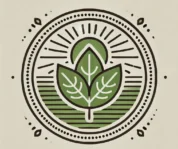In a world filled with consumerism, endless possessions, and digital distractions, many people are turning to minimalism as a way to reclaim their time, mental space, and happiness. Minimalism isn’t just about decluttering your home; it’s a mindset that encourages you to focus on what truly matters, leading to a life filled with more freedom, fulfillment, and lasting joy.
The Philosophy Behind Minimalism
At its core, minimalism is about stripping away the excess to focus on what’s truly important. This lifestyle encourages individuals to evaluate their possessions, habits, and commitments, asking the question: Does this add value to my life?
Minimalism isn’t about living with as little as possible—it’s about living with enough. This concept emphasizes intentionality, where each item or commitment in your life serves a purpose or brings you joy. By reducing the physical and mental clutter, minimalists create more space for meaningful experiences, relationships, and personal growth.
Why Americans Are Embracing Minimalism
In recent years, minimalism has gained traction in the U.S. as people grow weary of consumer culture, high levels of debt, and a general feeling of overwhelm. With the rise of social media and constant comparisons, many find themselves longing for simplicity. Here are some reasons why minimalism resonates so deeply with many Americans today:
Escape from Consumerism: Americans are bombarded by advertisements and social pressures to constantly buy more, but minimalism offers an antidote. By choosing to own fewer possessions, individuals can free themselves from the endless cycle of consumption and focus on what genuinely makes them happy. Financial Freedom: Minimalism often leads to better financial health. By cutting back on unnecessary purchases, minimalists can save money, pay off debt, and redirect their funds toward experiences or goals that truly matter. Mental Clarity: A cluttered environment often leads to a cluttered mind. Minimalism encourages individuals to clear out physical clutter, which in turn promotes mental clarity, reduced stress, and improved focus. Sustainability: Many minimalists are driven by environmental concerns. By reducing consumption, they contribute to a more sustainable lifestyle, helping to decrease their ecological footprint. More Time for What Matters: Owning fewer possessions means spending less time maintaining, organizing, and worrying about things. This leaves more time for hobbies, relationships, and personal passions, leading to a more fulfilling life.
Practical Steps to Embrace Minimalism
Start with Decluttering: Begin by evaluating your possessions. Ask yourself if each item is necessary or brings you joy. A good rule of thumb is the « one-year rule »—if you haven’t used something in the past year, it might be time to let it go. Adopt the “One In, One Out” Rule: For every new item you bring into your home, remove something else. This helps maintain balance and prevents excess accumulation. Streamline Your Schedule: Minimalism isn’t just about physical possessions. Examine your commitments and determine which activities or relationships add value to your life. Learn to say no to obligations that don’t align with your priorities. Prioritize Experiences Over Things: Research shows that people derive more lasting happiness from experiences than from material goods. Focus on creating memories—whether it’s travel, spending time with loved ones, or pursuing hobbies. Digitally Declutter: The digital world can be just as overwhelming as the physical one. Clean up your email inbox, unfollow social media accounts that don’t bring you joy, and set boundaries for how much time you spend online. Shift Your Mindset: Minimalism is a lifestyle change, not a one-time event. Continuously ask yourself, « Does this serve a purpose in my life? » Cultivating this awareness helps maintain a minimalist mindset long-term.
The Joy of Living with Less
When you let go of the excess and focus on what matters most, you gain freedom. Freedom from the pressure to keep up with others, freedom from financial burdens, and freedom from the mental weight of clutter. Minimalism is not about deprivation—it’s about creating space for joy, contentment, and meaning.
Many people who adopt minimalism report feeling lighter, both physically and emotionally. They have more energy to focus on their goals, more time for meaningful relationships, and more clarity about what truly makes them happy.
The Minimalist Impact on Happiness
Numerous studies support the idea that less is more when it comes to happiness. Research has shown that individuals who prioritize experiences and relationships over material goods tend to report higher levels of satisfaction and well-being. Minimalism fosters a sense of gratitude, as individuals focus on what they already have rather than constantly seeking more.
Living with less also reduces stress. A home free of clutter creates a sense of calm, while fewer obligations on your calendar allow for more relaxation and self-care. Minimalists often find themselves more content with life, as they are no longer caught in the cycle of always wanting more.
Conclusion
Minimalism offers a path to lasting joy by helping individuals focus on what truly matters. By simplifying their lives, minimalists create space for meaningful experiences, financial freedom, and inner peace. It’s not about living with nothing—it’s about living with intention.
Whether you’re decluttering your home, rethinking your priorities, or shifting your mindset, minimalism is a powerful tool for cultivating a happier, more fulfilling life. It allows you to embrace what you love most, letting go of the excess and focusing on what brings true joy.
Sources and Further Reading
Joshua Fields Millburn & Ryan Nicodemus. The Minimalists: Living a Meaningful Life. Asymmetrical Press, 2015.
Learn more on The Minimalists.
Marie Kondo. The Life-Changing Magic of Tidying Up: The Japanese Art of Decluttering and Organizing. Ten Speed Press, 2014.
Read more on KonMari Method.
Psychology Today. “Why Minimalism Is Good for Your Mental Health.”
Full article available here.

